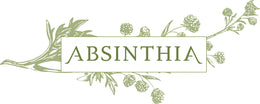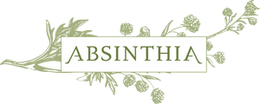What Makes Absinthe Louche?

Last week I explained why absinthe is green. This week I want to inform you about what makes absinthe louche.
What makes absinthe louche effect?
The louche effect is a large part of absinthe’s history and the rituals behind drinking absinthe, including the absinthe fountain.
The louche effect occurs when water is added to the absinthe. The added water makes the absinthe cloudy and turns it a beautiful milky green.
Absinthe is made from the holy trinity of herbs - wormwood, anise, and fennel - which are dissolved in the absinthe during the distillation process. Here is where science comes in. Adding water separates the essential oils from the holy trinity of herbs producing the milky color. Adding water to absinthe also releases the flavors and scents of the herbs used, so drinking it is a more pleasurable experience.
During the absinthe louche effect, water is responding with a hydrophobic chemical reaction. known as the Ostwald Ripening effect (absinthe fans call it the louche), Wilhelm Ostwald first described this effect in 1896. The Ostwald Ripening effect occurs when an added ingredient creates a reaction that no longer puts the initial compound in equilibrium either due to the PH level, the temperature, or common ions changing (the ability for the alcohol to bond with the oil). As alcohol and water share relatively the same PH level, the most significant changes in the louche effect occur from temperature. Colder absinthe will cloud up faster than absinthe that is at room temperature or warmer. As more cold water is added, the more the louche effect will become increasingly visible.
 This photograph shows the louche effect. The anise in my Absinthe Blanche causes the louche effect that turns the absinthe a milky white.
This photograph shows the louche effect. The anise in my Absinthe Blanche causes the louche effect that turns the absinthe a milky white.
Absinthia's Handcrafted Small-Batch Absinthe
The absinthe I make is true absinthe created from the vintage Swiss recipe. To be considered a true absinthe it must be distilled, and it must contain wormwood, anise, and fennel. A true absinthe must also be fully strained before bottling, unsweetened, and not contain artificial coloring. Absinthe can be clear liquid and bottled right from the still like my absinthe blanche recipe. This means I don’t enhance the color of the final distilled liquid with the coloration from the natural herbs. Absinthe blanche has a milky white or blue louche effect.
My Absinthe Blanche is soft and elegant, and it is delicious without added sugar. Once distilled, it is aromatic, brilliantly clear, and colorless. The anise causes the louche effect that turns the absinthe a milky white with a slight blue haze when water is added.
My Absinthe Verte is steeped with plants such as petite wormwood, hyssop, and melissa (among other herbs) during the distillation process. Chlorophyll from these herbs is extracted in the process, giving the drink its famous green color. Absinthe verte has a thick milky green louche effect.
The amount of water added to your absinthe is a matter of taste. Absinthe fountains make pouring water easy because you can control the amount added. Adding water from a carafe or jug is another easy way to add water to your absinthe for the louche effect. My preferred way to drink absinthe is poured over ice with just a splash of water (about a teaspoon) and stirred till louched.

This photo shows that the Absinthe Verte a thick milky green louche effect after water is added.
Looking for absinthe cocktail recipes? Visit my library of absinthe cocktail recipes for idea! Don't forget to add a bottle of my handcrafted, small-batch absinthe to your home bar.!






Leave a comment